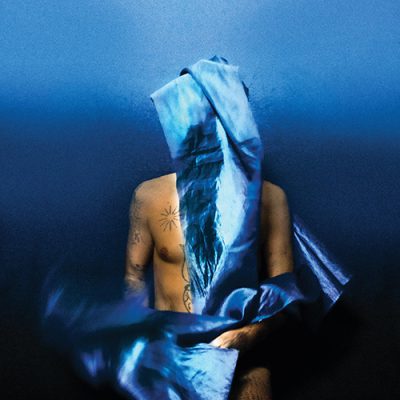
Devendra Banhart is no stranger to anyone who reads these pages. Flying Wig sees the Houston-born musician and songwriter releasing his 11th album into the wild. He is 21 years deep into a recording career and shows no slowing down in the exploration of pushing the boundaries of his sound. Flying Wig is a hypnotic and captivating listen from the very beginning. The sometimes perceived gentleness of his songs, take an an otherworldly turn on many of the tracks here. As someone who started life as a spiritual folk artist, he has grown into having a cult following and Flying Wig represents Banhart at his most stripped back, allowing the songs the space to breath and grow.
He recorded the album alongside stablemate and friend Cate Le Bon, who took the helms of producing (she’ll also crop up in a few weeks time at the helm of Wilco’s new album Cousin too). After spending years cultivating a relationship and with careers that have sometimes mirrored each other, Flying Wig marks the first time that the two have actually entered the studio together. The results are remarkable with Banhart stating that “We set out to make a record sonically unlike anything I have made before – with a new creative partner at the helm. We definitely wanted a new sound, electronic yet organic and warm…we wanted to draw out and emphasise the emotional aspect of a synthesiser.”
The whole album seeks to find the upside and the glimmering in an otherwise dark an fleeting world, about seeking to find the small moments of happiness in amongst the bleak, celebrating the freedom and joy that life can bring. They found this by recording in a redwood cabin studio, deep in the woods and once owned by Neil Young. Banhart spent the whole process listening to the Grateful Dead and Banhart speaks that the whole album is about “searching for hope, searching for a safe feeling”
Flying Wig is unlike anything he has recorded before, partly due to having a new producer and allowing himself to explore avenues previously untouched. The sense of isolation brought by the cabin it was recorded in is no more prevalent on songs like ‘Sight Seer’ and ‘Sirens’, songs that shimmer with a sadness whilst the music brings last song at the disco vibes. That’s not to say that there isn’t upbeat moments either, with songs like ‘Charger’ and the closing track ‘The Party’ both in particular bouncing along and leaving the listener filled with joy.
Even the title track comes from a joyful moment in the cabin. The wig in question being a birthday present from the artist and friend Isabelle Albuquerque. Banhart placed the wig on a mic stand in his living room where it stayed for months. Over time, Banhart began imagining the wig flying off while he was asleep and having adventures with the other toupees that fly around the night sky, “it seemed a lovely and haunting image, a symbol for freedom” Banhart stated.
He is on record as listing the other inspirations for the album ranging from “the ballroom scene of the mid 80s” through to “the bloodshot eyes of the divorcee” and “the rebellious nun”. Backed by his trusted band of long-term collaborators including Nicole Lawrence on pedal steel and guitar and Euan Hinshelwood on saxophone, the eeriness and woozy sound that Le Bon brings to proceedings is prevalent throughout these ten tracks, and adds to an already glittering catalogue which is well worth exploring for anyone who likes their folk a little murkier and out there.
The lead single ‘Twin’ is an outlier here, thumping twice as hard as anything else that surrounds it, urgent in its delivery and its message with Banhart trapped in a prison in his own imagination, in the “same desolate space” with the “same no way out” but trying to remember what needs to be cherished “this precious thing / at the heart of everything you wanted”.
Stepping outside of himself to examine the unspeakable, Devendra Banhart is suddenly freer than a bird. He is as free as a wig that transcends bot the body and mind, and makes for the skies above.
